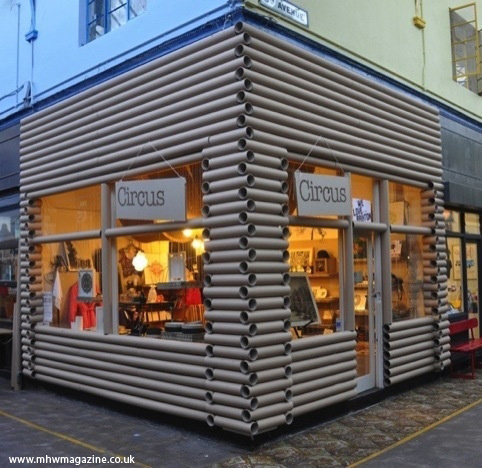
Corrugated packaging plays a pivotal role in supply chain sustainability by protecting goods in transit and offering a shelf-ready packaging solution for retailers, but there is more to this valuable resource than meets the eye.
Innovation is transforming the image of the world's favourite form of packaging, proving its trademark recyclability and versatility can provide eye-catching uses beyond its traditional purpose, says Confederation of Paper Industries (CPI).
Corrugated cardboard may not be the first building material that springs to mind, but it has been used by an artist to recreate astonishing cityscapes of London, Berlin and Paris - complete with iconic buildings such as the London Eye. While a corrugated cathedral in the New Zealand city of Christchurch, has formally marked its completion with a dedication service.
In addition to building blocks, corrugated has been designed for use on two and four wheels in the shape of bicycles and racing cars. These are striking examples, but more importantly, practical applications are also being developed to create new business opportunities.
For instance, corrugated is becoming so cool that a specially designed inner lining has been designed in the UK for the drinks industry. This enables a cardboard take-home pack of bottled beers to become a coolbox when the consumer adds ice or water.
While in the United States, the New Orleans Fish House and the Global Green USA Coalition for Resource Recovery are testing recyclable coated corrugated boxes for transportation of the local catch, after being designed to withstand the icy seafood packing process.
Other practical uses for corrugated include refoldable furniture that is lightweight and recyclable, recycled corrugated boxes used to make eco-cradles for sleeping babies, while at the other end of the spectrum, there is a growing demand in cardboard coffins for the eco-friendly burial sites that are springing up across the UK.
Innovative new applications for corrugated are to be applauded, but there is a serious message to get across, as CPI's Director of Packaging Affairs, Andy Barnetson, explains: "What will be considered as 'quirky' corrugated creations serve to emphasise the material's tremendous versatility and why it should never be regarded as waste.
"The UK Corrugated Industry is continually demonstrating the innovation required to meet customer demands. However, corrugated's impact on the retail supply chain remains the most significant, with the transition from a packaging medium for transporting goods to a three-in-one solution comprising product protection, an advertising platform and merchandiser."
CPI represents a multi-billion pound industry, thousands of UK jobs and the best packaging recycling record in the country. It is not only economical, but also has a superb environmental record - over 80% of the material is recycled every year, which if laid flat would cover an area the size of Greater London three times over.